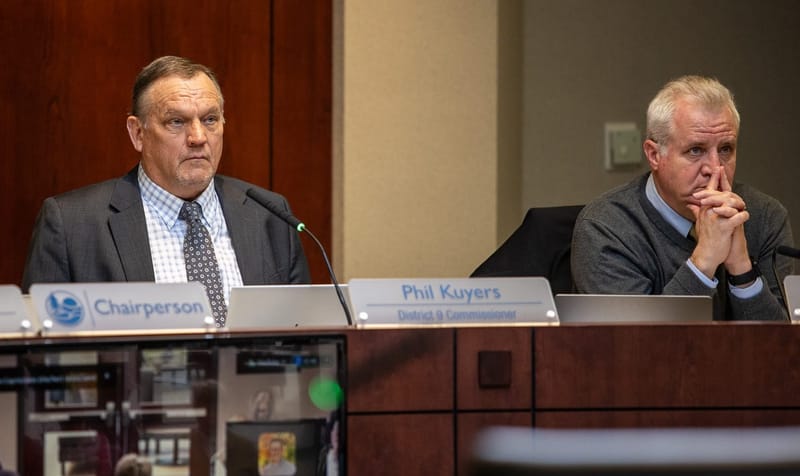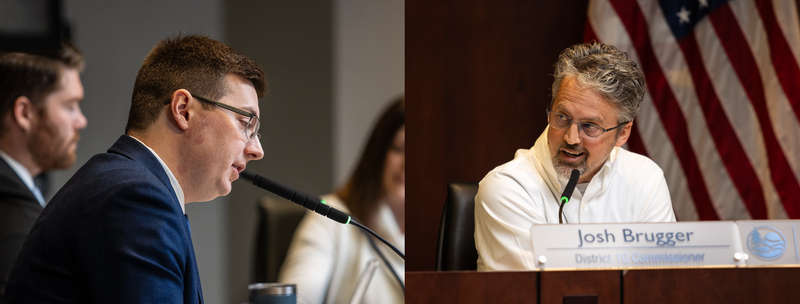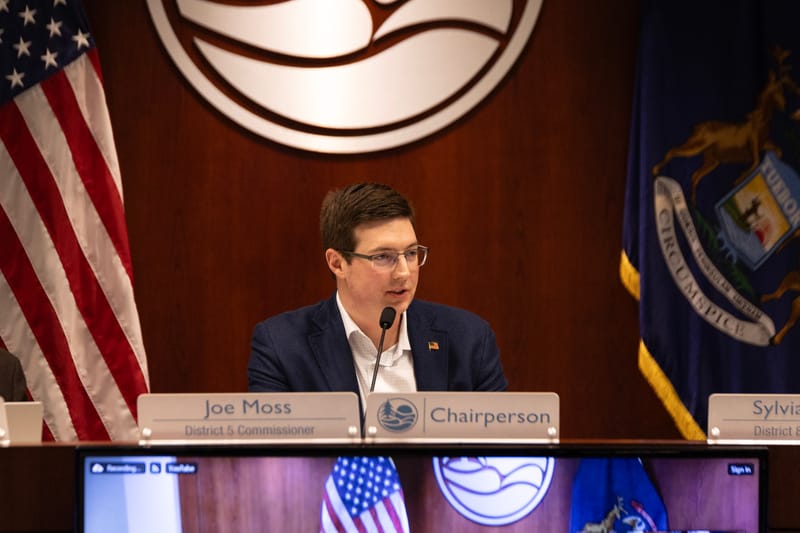Official: Proposed cuts to 2 federal programs would cut ‘lifeline’ to county residents
"Cuts would lead to less homes being weatherized and less households receiving utility assistance.”
OTTAWA COUNTY — The Ottawa County Community Action Agency recently released an update on the potential impact of President Donald J. Trump’s proposed 2026 budget, specifically for two federal programs: the Community Services Block Grant and the Low-Income Home Energy Assistance Program.
LiHEAP provides financial assistance to low-income households with heating and cooling utility bills. The CSBG supports services and activities for individuals and families with low incomes that alleviate the causes and conditions of poverty in communities.
Following the update released earlier this month by the OCCAA, the Ottawa News Network reached out to Jennifer Brozowski, the OCCAA program director, for a deeper dive into the proposed cuts and how it will affect the community.
ONN: The press release says the proposed budget would "drastically reduce" OCCAA's capacity. Can you provide a more specific number or percentage of how many families and services would be impacted?
Brozowski: “It is difficult to give a number. If both LiHEAP and CSBG are cut, we will see a decrease in the number of individuals we are able to serve in our Weatherization Assistance Program and, potentially, our Utility Assistance Program. LiHEAP accounts for about a third of the funding for our weatherization funding and CSBG provides financial support to our other programs that don’t often pay for themselves. CSBG is our lifeline. Without it, we would have to reevaluate how to support our very small team of eight staff and still meet the needs in the community.”
ONN: How would the proposed cuts to LiHEAP specifically affect the programs OCCAA offers? For example, would it mean fewer people get bill assistance or that other services like weatherization are eliminated entirely?
Brozowski: “LiHEAP would specifically impact the Weatherization Assistance Program and some aspects of the Utility Assistance Program. Cuts would lead to less homes being weatherized and less households receiving utility assistance.”
ONN: You mentioned that some contractors are small, family-owned businesses that rely on OCCAA. How many local jobs do these programs support?
Brozowski: “We currently work with around 10 local contractors. When factoring in employees, we probably support 50-plus jobs in the area. Some of our contractors rely on mostly our program alone. This would be devastating for their businesses. One contractor recently wrote us a letter stating that, ‘The impact the weatherization program has had on our small contracting business has been nothing short of miraculous.’”
ONN: Beyond the immediate need for heating and cooling, how do these programs act as a “first line of defense” to prevent a family's financial situation from spiraling, perhaps leading to eviction or job loss?
Brozowski: “Unpaid utilities can lead to eviction in some situations, therefore further impacting the housing crisis. In addition, we are currently able to help families with essential repairs if leading to our Weatherization Assistance Program. Costs due to issues like asbestos removal, knob and tube wiring, and mold and mildew remediation can be thousands of dollars. So many families right now are one large bill away from making very difficult decisions. While we can’t do it all, we can help fill a gap at a critical time to avoid causing debt and crisis to snowball.”
ONN: You mentioned that these programs ‘strengthen the whole community.’ Can you elaborate on the ripple effects? For instance, how does keeping a family stable benefit local schools, healthcare systems or other community resources?
Brozowski: “Children cannot bathe without running water. A home without paid utilities can lead to eviction, furthering the housing crisis. Medical devices such as oxygen and CPAP machines without electricity, don’t work. Financial strain and crisis are rarely the result of a single event; they are typically the culmination of compounding circumstances that gradually make everything worse. We try to catch it before it gets worse.”
ONN: If the cuts are approved, what would be the most immediate and visible change the public would notice in the services OCCAA provides?
Brozowski: “If cuts are approved, the Weatherization Assistance Program and Utility Assistance Programs will both be impacted. We would not be able to serve as many people, and we would be left with little to no funding for services the entire fiscal year. The public would likely see longer wait times for services and programs ending sooner in the year.”
ONN: What is the most effective way for residents to contact their congressional representatives to voice their support for these programs?
Brozowski: “There is no wrong way. We’ve been told that handwritten letters make a difference, as do the volume of phone calls and emails. The more contacts, the better.”
ONN: The press release mentions a potential continuing resolution (CR). How does that affect OCCAA's ability to plan and provide services, even if the programs are temporarily funded? And could you explain more what a continuing resolution really is?
Brozowski: “A continuing resolution keeps funding coming and programs operating at current levels while a budget is being formalized. While a CR would allow us to continue temporarily, it would still leave us with a lot of uncertainty. We would be left with more questions like: Can we continue to support our local contractors with the same number of jobs and for how long? Can we remain fully staffed? Can we continue to operate and serve as many people as we did this year, or do we need to cut back if funding is not fully restored?”
Support Our Work
Ottawa News Network is a nonprofit news service dedicated to providing the residents of Ottawa County with trustworthy, community-driven news. ONN treats journalism as a public good — something that enriches lives and empowers Ottawa County’s 300,000-plus residents to stay engaged, make informed decisions, and strengthen local democracy. Please consider giving today.
The federal budget
Trump's recently announced budget for the upcoming fiscal year proposes a substantial overhaul of federal spending, seeking to cut $163 billion — or about 10 percent — from the national budget. This plan would significantly increase allocations for defense and homeland security, while making drastic cuts to funding for education, the environment, housing and community development.
Despite the Republican majority in both houses of Congress, this budget still faces an uncertain future. GOP leaders are currently focused on a separate challenge: creating a single bill that would not only maintain existing tax cuts but also incorporate new ones proposed by Trump for Social Security earnings and overtime pay, meaning the budget has a long road ahead before it could potentially be adopted.
The federal government's fiscal year begins Oct. 1. If a budget is not passed by this date, Congress typically enacts a continuing resolution to temporarily fund government operations to avoid a shutdown.
The last federal government shutdown was for 35 days from December 2018 to February 2019 — during Trump’s first presidential term.
— Heather VanDyke covers northern Ottawa County for the Ottawa News Network. Contact her at hvandyke@ottawanewsnetwork.org.






